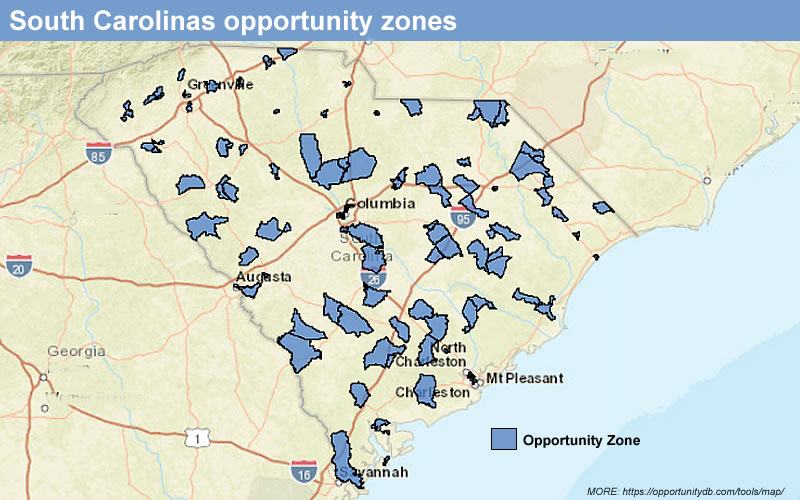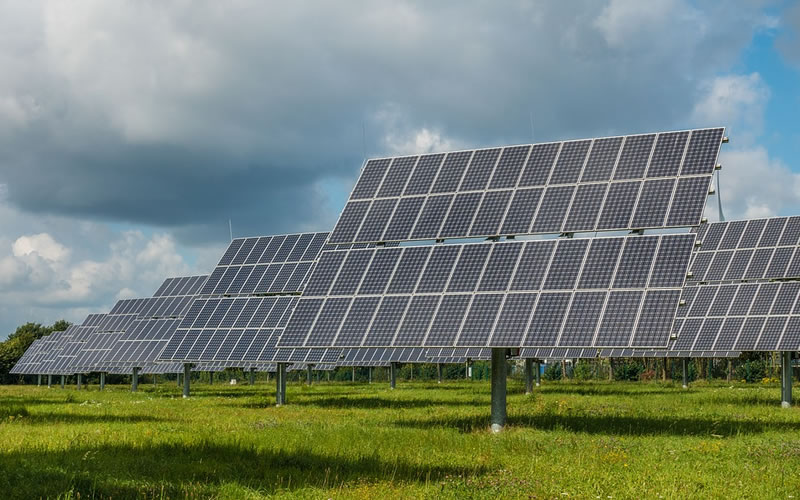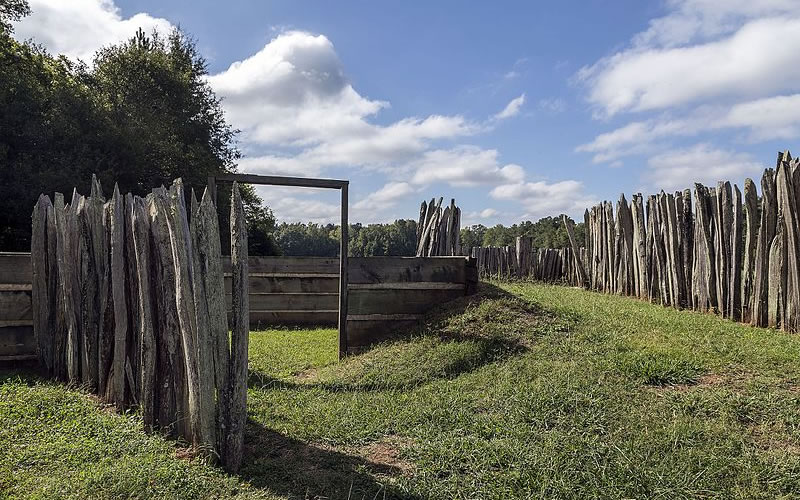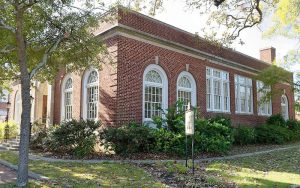INSIDE ISSUE 18.36 | SEPT. 6, 2019
 BIG STORY: Can the state make opportunity zones work better?
BIG STORY: Can the state make opportunity zones work better?
NEWS BRIEFS: 39 GOP state lawmakers pen letter opposing ‘red flag’ laws
COMMENTARY, Brack: State needs to step up on climate change
SPOTLIGHT: S.C. Farm Bureau
MY TURN, Gash: The new NAFTA could raise S.C. prescription drug prices
FEEDBACK: On The 1619 Project, engaging in S.C., American markets
MYSTERY PHOTO: Rustic, to say the least
S.C. ENCYCLOPEDIA: Hurricanes in S.C. up to Hugo
BIG STORY: Can the state make opportunity zones work better?
By Lindsay Street, Statehouse correspondent | A state Democratic lawmaker wants to “supercharge” a new federal tax break aimed at fueling private investment — and subsequently, jobs, housing and business — in blighted areas.
The federal Opportunity Zones tax break has received criticism from national publications and tax policy experts who say it benefits the wealthy and promotes gentrification.

But S.C. Rep. Marvin Pendarvis of North Charleston sees a bright side. That’s because the federal tax break needs a state component to make it successful, he said.
“If what I propose gets introduced and passed, it changes lives tremendously,” said Pendarvis, a Democrat. Half of his district is in an opportunity zone that he said is plagued with drugs, crime, homelessness and hopelessness. “We’re facing some real-life challenges in these zones … We need to make sure the investment has a return for the people as well.”
Pendarvis wants to add a state-level tax break for developers, but with a caveat: There needs to be tangible community benefit — such as jobs, affordable housing or green space — from qualifying projects. He said his bill, which will be prefiled prior to the 2020 session, will also track investments and promote community input to help create transparency and accountability.
Program costs $1.6 billion

The Opportunity Zones program is a tax break established in the Republican-backed 2017 federal tax overhaul. The program received bipartisan backing from U.S. Sens. Cory Booker of New Jersey, a Democrat, and Tim Scott of South Carolina, a Republican. Earlier this year, it was championed by Vice President Mike Pence who praised the program while touring the state’s opportunity zones.
“It’s all about making sure that as the American economy expands, it’s going to expand for every American,” he said.
The program allows developers to use capital gains — profits made from other investments — and re-invest that money into real estate and projects in specified zones, typically identified as low-income. The capital gains-fueled investment then will be untaxed unless the developer withdraws his or her investment before 10 years.
The idea is to spur new housing, businesses and jobs. One estimate says there is $2 trillion in capital gains funding that could be invested into the zones. The Tax Foundation estimated the program would cost $1.6 billion in revenue from 2018 to 2027. There are no estimates on what it could cost state governments, like South Carolina, that have coupled the state tax code with the legislation.
- Want to learn more about the Opportunity Zones program in South Carolina? The S.C. Opportunity Zone Summit is 9 a.m.-4 p.m. Oct. 10 at the Greenville Convention Center. The summit is geared toward stakeholders and investors. U.S. Sen. Tim Scott and industry experts will be at the summit. More info.
City sees ‘accelerating’ revitalization
Rock Hill has one of the state’s 135 designated opportunity zones. In the last year, the city has seen about eight projects totaling $250 million in investment, according to its economic development director.

Many of those projects were already in the works prior to the 2017 tax break, Mayor John P. Gettys told Statehouse Report. But, he added, the program is “accelerating” revitalization.
The city of Orangeburg has seen fewer projects in the pipeline but the presence of an opportunity zone has spurred more interest from developers, Mayor Michael C. Butler said.

“It’s been giving it more visibility,” he said. One project, a barber school, has set up in an abandoned building.
Statehouse Report reached out to nearly a dozen mayors with opportunity zones in their municipalities. Only Gettys and Butler responded.
Other than reaching out to local leaders directly, there is no way to track how many investments, the amount of investment dollars and how many jobs are tied to the federal program.
‘A weird incentive’
The relative newness of the Opportunity Zones program and the lack of centralized data collection on investments has made judging the success of the program problematic, according to tax policy experts.
- A yearlong study of the Opportunity Zones program by The New York Times was released Aug. 30. The analysis relied mostly on anecdotal evidence, and highlighted a number of problems with the federally encouraged investments. The story reported “the Trump administration’s signature plan to lift (America’s poorest areas) — a multibillion-dollar tax break that is supposed to help low-income areas — has fueled a wave of developments financed by and built for the wealthiest Americans.” Read more.
“We may never know how effective this program is. We’re going to be relying on anecdotal information,” Center on Budget and Policy Priority senior fellow Michael Mazerov said. In May, federal lawmakers, including Scott, introduced legislation to require reporting on the investments.
One of the earliest studies of opportunity zones has found a direct increase on property prices for redevelopment properties (up 14 percent) and vacant development sites (up 20 percent). The 2019 paper lines up with the fear that the federal incentive could fuel price increases that make running a business or affording rent in such zones difficult for those already living there.

Palmetto Project Executive Director Steve Skardon said the way the program is written, there is a potential for gentrification.
“It’s going to be average working people who are already struggling that have to turn around and move and find affordable housing somewhere else,” he said.
While opportunity zones are still too new for many tax policy experts to say whether they are successful, there have been a handful of place-based incentives from state and federal governments in the past, including Clinton-era enterprise zones and Obama-era promise zones.
The Tax Foundation’s federal research manager, Scott Eastman, said place-based incentives create “a weird incentive.” Businesses move across the street to get a tax break, so no new jobs are actually created, for example.
Mazerov said such incentives often can’t overcome the “very powerful economic reasons” an area is depressed, and they show little evidence for being “cost effective” for government to lose revenue to promote growth in a blighted area.
Making it work in South Carolina
Pendarvis’ proposal is based off of state-level incentives from Maryland and Alabama that are linked to the Opportunity Zones program.
“They realized that the federal legislation is only the first step,” Pendarvis said. Those states made community benefits a priority.
He is currently looking for support from the Governor’s office and Republican leadership in Columbia, but no Republican has offered to co-sponsored a bill yet, he said.
Skardon said state and local involvement could help the Opportunity Zones program succeed beyond helping investors make more money.
But Mazerov remained skeptical that states should piggyback off the federal program, however.
“Before considering more tax incentives to shape the amount, type, or location of opportunity zone investments, states should see what the existing incentives produce,” he wrote in May. He also suggested states like South Carolina follow North Carolina’s footsteps and “decouple” from the federal tax break so state revenues aren’t affected.
- Have a comment? Send to: feedback@statehousereport.com
NEWS BRIEFS
39 GOP state lawmakers pen letter opposing ‘red flag’ laws
By Lindsay Street, Statehouse correspondent | As President Donald Trump and U.S. Sen. Lindsey Graham, both Republicans, signal warmth for so-called “red flag” laws to curb gun violence, 39 state Republican lawmakers signed a letter opposing laws that would make it easier for law enforcement to seize weapons from people thought to be a harm to themselves or others.
 Instead, they urge Congress to address the “real issue” of gun-free zones. Read the letter.
Instead, they urge Congress to address the “real issue” of gun-free zones. Read the letter.
“The overwhelming majority of mass shootings (over 94 percent) occur in ‘gun-free zones.’ While law-abiding citizens actually follow the law, mass murderers do not. This, of course, makes the law-abiding citizens vulnerable in ‘gun-free zones,’” the letter states.
Congress and the president have been urged to act on curbing violent mass shootings in the wake of several high-profile incidents this summer.
This month, Graham announced he would introduce a “red flag” law that would create a federal grant program to help law enforcement work with mental health professionals to take action when needed, while ensuring “robust due process and judicial review.” He said it would allow local law enforcement to act before another mass shooting event.
But the state Republican lawmakers said such a bill would be “abused and used to target law-abiding citizens.”
“Absent the institutionalization of disturbed individuals, the person presenting actual threats to society will remain a threat after their firearms are removed,” the letter stated. “‘Red flag’ laws erode the very cornerstones of our country, the right to keep and bear arms and due process.”
Here are the GOP lawmakers who signed, in order that they appear on the letter:
- S.C. House members: Jonathon D. Hill, Stewart O. Jones, Josiah Magnuson, Ashley B. Trantham, Craig A. Gagnon, Mike Burns, Patrick B. Haddon, Jason Elliott, Bill Chumley, Garry R. Smith, Steven W. Long, Tommy M. Stringer, Chip Huggins, David R. Hiott, Anne J. Thayer, Mark N. Willis, Bobby J. Cox, Cal Forrest, Rick Martin, Heather Ammons Crawford, Chris Wooten, Nancy Mace, John R. McCravy III, Alan D. Clemmons, Mandy W. Kimmons, Bill Herbkersman, Melissa Oremus (unopposed Republican nominee for District 84), Bill Taylor, Steve Moss, Rita Allison, Sylleste Davis, Bill Hixon, and Adam Morgan.
- S.C. senators: Rex F. Rice, Danny Verdin, Larry Grooms, Richard J. Cash, Wes Climer, and Tom Corbin.
In other state news:
![]() Senate panel reviews abortion restrictions. A Senate Medical Affairs subcommittee has set a four-hour meeting for 10 a.m. Sept. 10 in room 105 of the Gressette building to review House bill 3020, which would prohibit abortions after a fetal heartbeat can be detected. Agenda.
Senate panel reviews abortion restrictions. A Senate Medical Affairs subcommittee has set a four-hour meeting for 10 a.m. Sept. 10 in room 105 of the Gressette building to review House bill 3020, which would prohibit abortions after a fetal heartbeat can be detected. Agenda.
More abortion news for S.C. State Attorney General Alan Wilson joined 18 other state attorneys general this week defending the right of states to prohibit abortion after 20 weeks of pregnancy. The brief, filed Tuesday with the 4th U.S. Circuit Court of Appeals, supports the constitutionality of North Carolina’s 20-week ban, and therefore other states with similar bans, like South Carolina. Read the brief.
Charter school funding examined. The House Education and Public Works Committee’s Ad Hoc Committee on Charter Schools will review an Education Oversight Committee report on charter school funding systems 1 p.m. Sept. 9 in room 433 of the Blatt building. Agenda.
Oversight panel to review two state agencies. The Legislative Oversight Committee will discuss two studies looking at the Housing Finance and Development Authority and the Rural Infrastructure Authority 10 a.m. Sept. 9 in room 110 of the Blatt building. Agenda.
Climate ‘strike’ set in S.C. cities. At least two Climate Strike events are slated in South Carolina Sept. 20 to coincide with a worldwide event promoting climate change policies. Columbia will hold a strike at 9:30 a.m. Sept. 20 at 1100 Gervais St. and Greenville will hold a strike at noon Sept. 20 at Greenville City Hall. The strike coincides with strikes in other cities, three days before the United Nations’ Climate Summit in New York City. More info.
2020 candidate calendar
Throughout the campaign season, we are working to keep South Carolina informed of candidate events in the state. Have an event you want us to know about? Email us at 2020news@statehousereport.com.
 Sept. 12 Democratic debate lineup set. The Democratic National Committee has announced that 10 candidates will face off in Houston Sept. 12. The debate will air on ABC News. Find local debate watch parties here.
Sept. 12 Democratic debate lineup set. The Democratic National Committee has announced that 10 candidates will face off in Houston Sept. 12. The debate will air on ABC News. Find local debate watch parties here.
More head to stump. U.S. Sen. Bernie Sanders, I-Vt., and New York City Mayor Bill de Blasio are the latest Democratic presidential candidates to confirm they’ll participate in the Sept. 16 Galivants Ferry Stump meeting. They’ll join former Vice President Joe Biden, South Bend Mayor Pete Buttigieg, U.S. Rep. Tulsi Gabbard of Hawaii and U.S. Sen. Amy Klobuchar of Minnesota. The event starts at 5 p.m. and will be moderated by U.S. Rep. Jim Clyburn, D-S.C.
Blue Jamboree. Thousands are expected to attend the all0day Oct. 5 Blue Jamboree held by the Charleston County Democratic Party at The Bend, 3775 Azalea Drive, in North Charleston. Sponsors of the event include these presidential candidates: Kamala Harris, Joe Biden, Bernie Sanders, Elizabeth Warren, Tom Steyer, Cory Booker, Andrew Yang, Pete Buttigieg, Michael Bennet, Tulsi Gabbard and Julian Castro. Tickets are $20 now.
- Have a comment? Send to: feedback@statehousereport.com
BRACK: State needs to step up on climate change

By Andy Brack, editor and publisher | Maybe a massive hurricane that howls and slashes its way through coastal South Carolina will be enough to convince her people that now is the time to face climate change and do more.
 It’s hard to deny we are experiencing bigger storms with more impact than when Hugo slammed into the state 30 years ago. In just the last four years, there have been three coastal evacuations.
It’s hard to deny we are experiencing bigger storms with more impact than when Hugo slammed into the state 30 years ago. In just the last four years, there have been three coastal evacuations.
To climate deniers: Keep ignoring what’s happening to our state. Ignore rising sea levels, hotter summers, more flooding, more hurricanes and armadillos moving north. The rest of us have work to do.
“Those who deny basic scientific facts are not an excuse for the rest of us not to act,” said Eddy Moore, energy and climate director at the Coastal Conservation League in Charleston. “State and local action can be very effective at reducing carbon pollution while putting our economy on a better footing. We want to be the leaders who are growing new clean energy markets and exporting technology, not the last ones to adopt.”
The state of South Carolina can do more than you may think to be part of the solution instead of continuing to be part of the problem.
First, we can stop producing power from dirty coal plants, which spew tons of carbon in great amounts into the atmosphere, contributing to global warming. Santee Cooper, for example, recently announced it was going to phase out a coal power plant in Georgetown.

“We have already reduced power plant emissions by over 20 percent in the last few years just by running coal plants less—for purely economic reasons,” Moore said. “The old coal plants simply cost more to run. Two-thirds of the remaining pollution comes from just five power plants that supply less than a quarter of our electricity.”
So let’s get rid of these plants. Let’s be smart about what replaces them. Instead of continuing to burn fossil fuels by switching from coal to natural gas, the state should use its power to force its state-owned utility to generate power from clean, renewable sources and to strongly encourage private generators to do the same.
From an economic perspective, this makes sense. “Solar in the Carolinas is in the mid-$30s per megawatt hour, which is an all-in cost to build and operate plants, and it is trending downward,” Moore said. “The coal plants are running at high $30s to $60s or higher. That’s the cost to merely keep them running, without new environmental upgrade costs.”
Steering away from fossil fuels also makes political sense, when you consider that the two biggest sources of carbon pollution in South Carolina are the five coal plants and millions of vehicles on the road.
“The power plants are the low-hanging fruit,” Moore said. “It should be easier to close five power plants than to convince 5 million people to drive electric vehicles. And clean energy on the electric system will power the electric vehicles as people naturally shift that direction.”
Other things the state can do to curb climate change:
- Pass a real state energy plan that sets a goal to have 100 percent clean energy by 2050.
- When dealing with the future of Santee Cooper, require any new owner or management team to divest of coal plants and replace them with clean energy, including ways to capture wind offshore.
“The General Assembly needs to watch very carefully to make sure that we do not over-invest in new gas-fired power plants rather than renewable energy,” Moore said. “Maximum renewable energy and a strong program of building retrofits to save energy is not only the best way to reduce carbon pollution—it is the lowest cost plan going forward.”
- Make sure the state Public Service Commission lives up to its responsibility by opening markets for renewable energy as outlined in the recently-passed Energy Freedom Act. “Some of those key decisions will happen in the next ten weeks,” Moore added.
Dealing with climate change is reaching a tipping point. In recent days, three Democratic presidential candidates announced detailed climate initiatives. Our state now needs to step up in bigger ways to leave a better South Carolina for our grandchildren — especially if we want our special places to remain special.
Andy Brack’s latest book, “We Can Do Better, South Carolina,” is now available in paperback and for Kindle via Amazon.
- Have a comment? Send to: feedback@statehousereport.com.
SPOTLIGHT: S.C. Farm Bureau
 Statehouse Report is provided for free to thousands of subscribers thanks to the generosity of our underwriters. Today we shine a spotlight on our newest underwriter, S.C. Farm Bureau. It is a grassroots, non-profit organization that celebrates and supports family farmers, locally-grown food and rural lands through legislative advocacy, education and community outreach.
Statehouse Report is provided for free to thousands of subscribers thanks to the generosity of our underwriters. Today we shine a spotlight on our newest underwriter, S.C. Farm Bureau. It is a grassroots, non-profit organization that celebrates and supports family farmers, locally-grown food and rural lands through legislative advocacy, education and community outreach.
S.C. Farm Bureau’s alliance of nearly 100,000 members includes everyone from foodies and fishermen to lawyers, restaurateurs, entrepreneurs, community leaders, and of course, farmers. By connecting farmers to the larger community, the organization cultivates understanding about agriculture’s importance to our local economies. The S.C. Farm Bureau explains its mission: “We deepen our collective knowledge of who, where and how food grows. We empower people to make informed choices. We grow mutually-beneficial relationships. And, we ensure the future of the family farms, locally-grown food and the rural South Carolina lands we love.”
- To learn more about S.C. Farm Bureau’s programs, click here.
- To view media and publications, click here
- For policy and legislation, click here.
The new NAFTA could raise S.C. prescription drug prices

By Kitt Gash, special to Statehouse Report | Bipartisanship is a rare thing these days, especially in Washington, where it seems like a relic of a bygone era. Regardless of where they come from or what they’ve been told by their constituents, our elected officials seem to vote only according to the letter D or R next to their name. Still, every once in awhile an issue cuts through the noise and brings both sides together.
![]() High prescription drug prices have gotten so unmanageable that Democrats and Republicans alike agree that something needs to be done. Yet, both sides are also talking about voting for President Trump’s new NAFTA, the U.S.-Mexico-Canada Agreement (USMCA), which could stick Americans with even higher prices for medicines for years to come.
High prescription drug prices have gotten so unmanageable that Democrats and Republicans alike agree that something needs to be done. Yet, both sides are also talking about voting for President Trump’s new NAFTA, the U.S.-Mexico-Canada Agreement (USMCA), which could stick Americans with even higher prices for medicines for years to come.
USMCA proponents point to reduced tariffs on agricultural products and requirements that cars and trucks sold in North America to be made from a greater percentage (75 percent) of U.S.-made parts. These could potentially be beneficial to South Carolina workers — but only if there is a strong way to enforce these provisions and make sure Canada and Mexico adhere to the agreement. Otherwise, these promises are not worth the paper they are printed on and South Carolina’s workers, farmers and consumers will pay the price. We must demand better.
Lower tariffs and auto trade provisions are about what you’d expect a trade agreement to include. But the deal also includes a broad chapter on intellectual property, and locks in a long patent life for costly brand biologic drugs. More than $125 billion was spent on biologic drugs, which are pharmaceuticals made from living organisms, last year alone. This spending falls to patients multiple times: in the form of higher insurance premiums, out-of-pocket costs they have to pay directly, and higher taxes from state Medicaid programs ill-equipped to deal with exploding costs.
Senior citizens, in particular, are saddled with these costs. Many live on fixed incomes and are unable to afford double-digit price increases. Some cut their pills in half or ration them to last longer than they’re supposed to, making them less effective in the long run. While doctors advise against this, patients forced to choose between paying rent and filling prescriptions are left with little choice.
Unfortunately, the USMCA, in its current form, would supersede U.S. law if approved, preventing Congress from acting to reduce the length of the legal monopoly that biologic drugs have in the United States. It would also expand the types of biologic drugs covered by the patent terms’ legal monopoly, without providing additional transparency or any other measures to encourage competition between brand-name biologic drugs and lower-cost, medically equivalent “biosimilars.”
Generic drugs saved South Carolinians $4.5 billion in 2017. Most generics are filled at a cost of $20 or less, with an average co-pay of about $6. Yet, the USMCA does nothing to encourage competition between generic and brand-name producers, actually protecting the profits of big brand-name pharmaceutical corporations under the negotiated agreement.
Congressman Joe Cunningham, D-S.C., has declared repeatedly that lowering prescription drug prices is a priority for him. He’s introduced bills to tackle high prices, but has become a target for lobbyists and others who want to pass the Trump Administration’s agreement quickly, without considering changes that would make it better for patients. Congress has done this before – in 2007, the House pushed to renegotiate the prescription drug portion of trade agreements with Colombia, Panama and Korea, and the Bush Administration agreed to the changes.
The South Carolina chapter of the Alliance for Retired Americans strongly supports changes to the USMCA which would make it friendlier to patients and older Americans struggling with their health care costs. So do more than two dozen other organizations, including labor unions, taxpayer advocates, senior citizens’ groups, and others, who wrote to the Trump Administration last fall calling for changes. Congressman Cunningham should stand up for South Carolina and oppose the Big Pharma giveaways in the new NAFTA. Back at home, we need the help.
Charleston resident Kitt Gash is a member of the South Carolina Alliance for Retired Americans.
- Have a comment? Send to: feedback@statehousereport.com.
Out in the field
EDITOR’S NOTE, updated 9/7/19: As correspondent Lindsay Street last week was developing a story on how farmers in South Carolina were losing hope because of the Trump tariff war, longtime cartoonist and friend Robert Ariail of Camden was having similar thoughts. After he read this story, he sent along the following cartoon as a special kind of commentary. Thanks for letting us use it!

The 1619 Project, play tell stark truths about race
To the editor:
![]() I read every word of The New York Times’ compelling magazine issue containing The 1619 Project and wish everyone could have access to it. It was brilliant and deserves widespread dissemination.
I read every word of The New York Times’ compelling magazine issue containing The 1619 Project and wish everyone could have access to it. It was brilliant and deserves widespread dissemination.
I am so glad you brought this up for your readers. It is such a painful story. Another powerful testimony to the lasting impact of slavery is contained in Randy Neale’s brilliant play, Last Rites, on now at Pure Theatre [in Charleston]. Set in the midst of the Detroit riots of 1967, it uses three characters to show the gulf that divided and divides people and the rage that oppressed people feel, then and now. Randy Neale lived near Detroit at that time and has been haunted by the events then; his play, which runs for only a few more days, ought to be revived and shown elsewhere.
— Judy Hines, Charleston, S.C.
Keep it up
To the editor:
Thank you Andy for what you do at the state level, the county level, organizations and community levels, all the way down to S.C. citizen actions and behavior level. Please don’t stop.
— Albert Wiggins, Early Branch, S.C.
What happens when one fiddles with American markets
To the editor:
President Trump destroys American soybean farmers and indirectly the environment as Brazil’s farmers burn the Amazon forest to make more room to grow soybeans to sell to the Chinese.
— George Wilson, Stone Mountain, Ga.
Send us your thoughts … or rants
We love hearing from our readers and encourage you to share your opinions. But you’ve got to provide us with contact information so we can verify your letters. Letters to the editor are published weekly. We reserve the right to edit for length and clarity. Comments are limited to 250 words or less. Please include your name and contact information.
-
- Send your letters or comments to: feedback@statehousereport.com
Rustic, to say the least

This photo doesn’t show a Boy Scout project, but is something else. What is it and where? Send your guess about the location of this photo to feedback@statehousereport.com. And don’t forget to include your name and the town in which you live.
Our previous Mystery Photo
 Our Aug. 30 mystery, “Old brick building,” has housed the Hartsville Museum since 1980. The Colonial Revival brick building was first built in 1930 as a post office and later became a library.
Our Aug. 30 mystery, “Old brick building,” has housed the Hartsville Museum since 1980. The Colonial Revival brick building was first built in 1930 as a post office and later became a library.
Congratulations to these diligent photo sleuths: Bill Segars and Don Clark, both of Hartsville (this was too easy for them); Jay Altman of Columbia; Frank Bouknight of Summerville; and George Graf of Palmyra, Va.
Bouknght said he remembered his grandfather taking him on evening walks downtown to check his mail. Segars said the post office, which was built in 1930 for $63,933, became a library in 1963. “This building is situated in a main downtown block of Hartville. Two of the other buildings in the block are the Center Theater, a performing arts venue, and the Community Market Building, now used as an art center.”
Graf shared information that highlighted how Hartsville continued to grow during the Great Depression, unlike other communities. “One [factor] was its citizens’ belief that their town was special, that it had, as a radio address titled “The Spirit of Hartsville” claimed in 1936, “a wealth of spiritual values which translate men and women into a rich and fruitful and satisfying community life.” This belief which was shared – and encouraged – by Hartsville’s business and political leaders, resulted in several significant projects in the 1930’s and 1940’s. These included the construction of the Hartsville Post Office; the Hartsville Community Center and Hartsville Community Market; and the Lawton Park and Pavilion; as well as the Hartsville Armory; Hartsville High School; and the Butler High School Auditorium.”
- Send us a mystery: If you have a photo that you believe will stump readers, send it along (but make sure to tell us what it is because it may stump us too!) Send to: feedback@statehousereport.com and mark it as a photo submission. Thanks.
S.C. ENCYCLOPEDIA
HISTORY: Hurricanes in South Carolina up to Hugo

S.C. Encyclopedia | The term “hurricane” comes from the West Indian word “huracan,” which means “big wind” and is used to describe severe tropical cyclones in the Atlantic Ocean, Gulf of Mexico, Caribbean Sea, and the eastern Pacific Ocean. In the western Pacific, hurricanes are known as typhoons. The development of a hurricane requires an area of low pressure in a region of favorable atmospheric and oceanic conditions. Ocean temperatures must be near or greater than 80 ̊ F and wind speeds at mid- and upper-levels of the atmosphere must be light. At the center of the hurricane is the eye, a region of calm winds and subsiding air immediately surrounded by the most violent winds and precipitation called the eye wall. The counterclockwise rotation of cyclones in the Northern Hemisphere creates spiraling rain bands that span outward from the center. The outer rain bands of a hurricane, which can extend over an area 300 to 500 miles in width, contain the highest wind and heaviest precipitation away from the eye wall.
![]() As the Northern Hemisphere summer approaches, more direct sunlight and longer daylight hours allow tropical oceans to warm sufficiently to support hurricane development. For that reason hurricane season runs from June 1 to November 30 each year in the Atlantic Ocean, Gulf of Mexico, and Caribbean Sea. During this time South Carolina is susceptible to land-falling tropical cyclones ranging in strength from tropical depressions (sustained winds less than 39 mph) to tropical storms (winds of 39 to 73 mph) and hurricanes (winds of 74 mph or higher). Hurricanes are classified into five categories using the Saffir-Simpson scale based on maximum sustained winds, minimum central pressure, storm surge, and damage. Between 1900 and 2004, fifteen hurricanes hit South Carolina directly, making the average landfall once every seven years. Three of the fifteen hurricanes have reached major hurricane status of category 3, 4, or 5 on the Saffir-Simpson scale. The average for any tropical storm or hurricane landfall in South Carolina is once every four to five years. Storms that make landfall along the Gulf of Mexico, Georgia, and North Carolina coastline often impact South Carolina as well. The primary threats from hurricanes in South Carolina include storm surge, high winds, rainfall-induced flooding, and tornadoes.
As the Northern Hemisphere summer approaches, more direct sunlight and longer daylight hours allow tropical oceans to warm sufficiently to support hurricane development. For that reason hurricane season runs from June 1 to November 30 each year in the Atlantic Ocean, Gulf of Mexico, and Caribbean Sea. During this time South Carolina is susceptible to land-falling tropical cyclones ranging in strength from tropical depressions (sustained winds less than 39 mph) to tropical storms (winds of 39 to 73 mph) and hurricanes (winds of 74 mph or higher). Hurricanes are classified into five categories using the Saffir-Simpson scale based on maximum sustained winds, minimum central pressure, storm surge, and damage. Between 1900 and 2004, fifteen hurricanes hit South Carolina directly, making the average landfall once every seven years. Three of the fifteen hurricanes have reached major hurricane status of category 3, 4, or 5 on the Saffir-Simpson scale. The average for any tropical storm or hurricane landfall in South Carolina is once every four to five years. Storms that make landfall along the Gulf of Mexico, Georgia, and North Carolina coastline often impact South Carolina as well. The primary threats from hurricanes in South Carolina include storm surge, high winds, rainfall-induced flooding, and tornadoes.
The storm surge develops as high winds pile up water ahead of hurricanes and low pressure near the center causes the sea level to rise. On September 22, 1989, Hurricane Hugo made landfall near Sullivan’s Island with a storm surge of twenty feet in Bulls Bay. Storm surge reports of ten to fourteen feet were reported along the entire coastline from Folly Beach to Myrtle Beach. The maximum sustained winds just before landfall in Hugo were estimated at 140 mph. The damage from Hugo was catastrophic with an estimated $10 billion damage from the Caribbean to the U.S. mainland. In South Carolina hurricane force winds were reported inland as far north as York County. Shaw Air Force Base in Sumter experienced winds of 66 mph with gusts to 108 mph. Thousands of acres in the Francis Marion and Sumter National Forest were destroyed.
Thirty years earlier Hurricane Gracie hit Beaufort on September 29, 1959, with 125 mph winds and gusts to 150 mph. The storm surge associated with Gracie was less severe than with Hugo since the hurricane made landfall within an hour of low tide. Rainfall amounts with Gracie totaled three to eight inches in South Carolina and flooding of streams and rivers occurred well inland along the Appalachian Mountains. The main threat from Hurricane Gracie was the high winds and potential for tornadoes. Damage in South Carolina reached an estimated $14 million, with more than half the amount in Charleston County alone. The preliminary report from the Hurricane Warning Center in Miami (now the National Hurricane Center) described the damage as “the worst from a hurricane in the history of Beaufort, South Carolina.” Ten deaths were attributed to the storm in South Carolina, primarily due to downed trees and power lines and automobile accidents.
With a forward speed of more than 30 mph and winds more than 130 mph, Hurricane Hazel moved inland near Little River at the border between North and South Carolina on October 15, 1954. Wind gusts were observed to reach 106 mph at Myrtle Beach where more than 170 miles of piers and beachfront property from the Grand Strand northward to near Wilmington, North Carolina, were destroyed. A seventeen-foot storm surge was responsible for $61 million in beach damages, with another $100 million reported inland due to flooding and high winds. Twenty people drowned due to rainfall-induced flooding across the Carolinas as ten to twelve inches of rain fell in the mountainous terrain.
Perhaps the most remarkable storm in South Carolina’s hurricane history occurred prior to 1900. Termed the “Great Storm of 1893,” the late-August hurricane made landfall along the southern coast with little or no warning. A tremendous storm surge and high winds were responsible for more than two thousand deaths.
— Excerpted from an entry by S.C. Climatology Office. This entry may not have been updated since 2006. To read more about this or 2,000 other entries about South Carolina, check out The South Carolina Encyclopedia, published in 2006 by USC Press. (Information used by permission.)
ABOUT STATEHOUSE REPORT
Statehouse Report, founded in 2001 as a weekly legislative forecast that informs readers about what is going to happen in South Carolina politics and policy, is provided to you at no charge every Friday.
Meet our team
- Editor and publisher: Andy Brack, 843.670.3996
- Statehouse correspondent: Lindsay Street
Buy the book
 Now you can get a copy of editor and publisher Andy Brack’s We Can Do Better, South Carolina! ($14.99) as a paperback or as a Kindle book ($7.99). . The book of essays offers incisive commentaries by editor and publisher Andy Brack on the American South, the common good, vexing problems for the Palmetto State and interesting South Carolina leaders.
Now you can get a copy of editor and publisher Andy Brack’s We Can Do Better, South Carolina! ($14.99) as a paperback or as a Kindle book ($7.99). . The book of essays offers incisive commentaries by editor and publisher Andy Brack on the American South, the common good, vexing problems for the Palmetto State and interesting South Carolina leaders.
More
- Mailing address: Send inquiries by mail to: P.O. Box 22261, Charleston, SC 29407
- Subscriptions are free: Click to subscribe.
- We hope you’ll keep receiving the great news and information from Statehouse Report, but if you need to unsubscribe, go to the bottom of the weekly email issue and follow the instructions.
- © 2019, Statehouse Report. All rights reserved.


